توسط chris Grinter, on July 1st, 2010 And now for the even more infrequently reoccurring series, vox populi! For those without scarring high school memories of latin class (through no fault of my teacher) I’ll bring you up to speed – the title roughly translates to “voice of the people”. Here is another old e-mail that I’ve been saving. It is a 100% real message, but of course I have redacted the real names and addresses to protect the innocent. Enjoy! I also highly encourage submissions of your own-
زمستان 2008:
“سلام, I’m so glad I found you. اکنون, I hope you can help me. 1982, while camping at an old gold mining camp in the Mendocino National Forest I was bitten by a large brown spider. It took three days for the venom to pass through my system. On day three I was 95% blind, the bite swelled to a large grotesquely deep red bump on my arm. I’ll never forget the 12 hours the venom attacked me. The price I payed to survive this spiders venom was…….to loose absolutely all my body fat. I spoke with a doctor from Santa Rosa by phone from a friends place in (some small CA town). He knew about this spider and couldn’t believe I suvived the venom when I told him I lost all my body fat. He also told me it was impossible for someone to survive loosing all their body fat in 12 ساعت ها. I reminded him that this was an impossible situation. He told me that this spider is being kept from the public. I believe this spider came from China or Russia. These spiders don’t share anything with other Cali spiders. They have big bodies and short stout legs. The female that bit me was about 4 inch’s and, had 5 males. Four years later, while living in the Hayward hills, I couldn’t believe my eyes, running across the floor, another one. This spider was about 6 inch’s. I know these spiders don’t climb walls or spin webs. They build nest’s, and obtain 4-5 males to protect her and find food. The female never leave’s the nest except…………when a larger female drives her out and, kills her males. This is when people are bitten by this spider, as she runs around looking for another nest. Bites are very uncommon. I wondered………….how big was the female that drove that 6 inch from her nest. و………….how big do they get. Can I find this spider on display at (your museum)? Is it possible to find all the information their is on this very dangerous spider?”
Continue reading Vox Populi, volume II
توسط chris Grinter, on June 26th, 2010 Welcome to volume eight of the inconsistently reoccurring series, نابغه مطبوعات. من در سراسر آمد این مقاله recently regarding an endemic Puerto Rican butterfly. Who can tell me exactly why this report is misleading? It may be a little trickier than the standard GOP (I suggest discarding any previously associated acronyms with those letters). Hint, just telling me the butterfly in the picture is from Malaysia is not the answer I’m looking for!
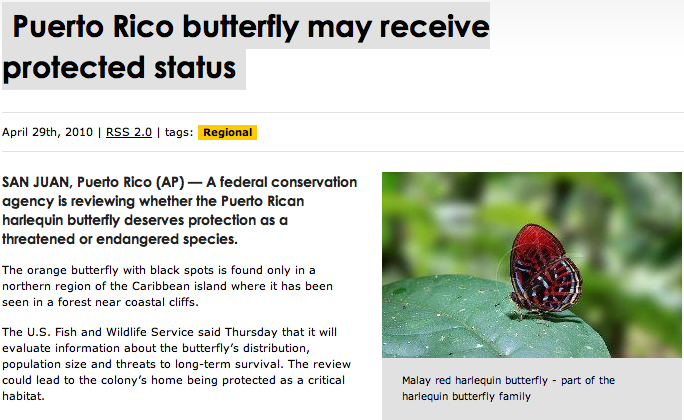
توسط chris Grinter, on June 23rd, 2010 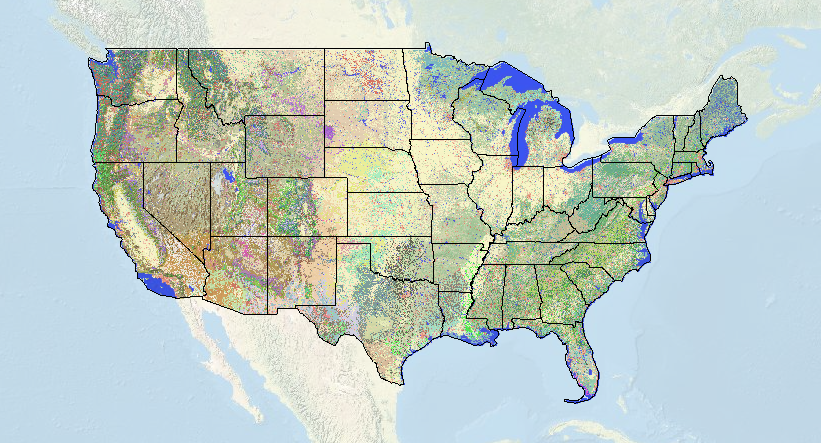
I’ve always wondered how to find the correct terminology for land cover in a given area. Usually, I just ballpark something along the lines of “oak chaparral”. But now I can use this awesome new map brought to us by the USGS/National Biological Information Infrastructure. The level of detail is amazing, and you can specify the degree of accuracy with a drop down tab (1-3). Now with a high-def US topo map I can see exactly where the largest stands of monterrey pine are (actually it’s a California Coastal Closed-Cone Conifer Forest and Woodland) so I can optimally place my trap this weekend.
Continue reading Landscape Cover Map
توسط chris Grinter, در ژوئن 18, 2010 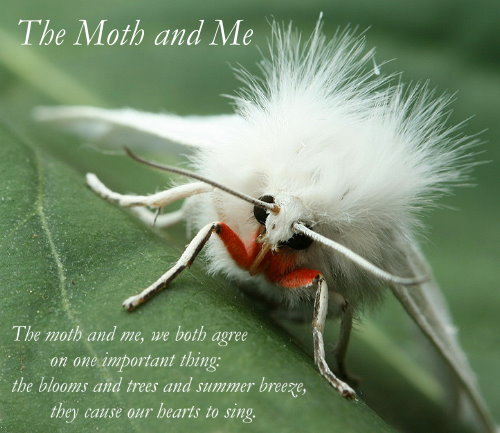
به پروانه و من خوش آمدید #12, و برای اولین بار از کارناوال وبلاگ من. با وجود وبلاگ نویسی برای چند ماه من هنوز به نگاهی به پشت و منعکس کننده در تاریخ دقیقا چه من با پولکبالان در وهله اول شیفته شد. به خاطر سپردن یک زمان و یا مکانی که این اتفاق افتاده است غیر ممکن است, and like many of my colleagues and I’m sure many of my readers, I had a butterfly net and “bug cage” in hand as soon as I could walk. When it comes to entomology I believe almost everyone falls in love at first with a large and striking insect. For me it was a butterfly, naturally. I can remember staring for endless hours at the diversity of Ornithoptera and Papilio illustrated in Paul Smart’s famous book. Somewhere along the way in pursuit of something new I began to stray into the nocturnal world. Moths comprise the majority of the diversity of Lepidoptera; while there are nearly 11,000 species in the United States, only a few hundred are butterflies. This quickly opened a door (maybe into an abyss…) to the shocking abundance found everywhere around us. This amazing diversity has now drawn me deep into the biology and evolutionary history of the Lepidoptera. Editing these fourteen contributions of moth blogging together I just can’t help but to reflect back on some of my own mothing journey.

پerhaps if I was a child in Europe this moth (Deilephila elpenor porcellus) would have been the first to catch my eye. Over at Urban Moths Ron Laughton has discovered the stunning diversity in his own back yard in much the same way as I did growing up here in the US. Take a look at the types of traps he has been using, most of which he constructed himself. One of the best behaviors of moths is their willingness to dive headlong into the light. Not too far from Ron, Mike Beale has been blogging british moths as well. It can be pretty amazing just how similar our two faunas are (a few moths actually are the same).
Continue reading The Moth and Me #12
توسط chris Grinter, on June 11th, 2010 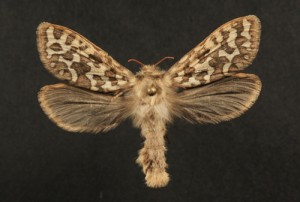
This moth is just about as rare as its paranormal namesake (except that it’s real) – it’s a Gazoryctra sp. in the family Hepialidae. They represent a basal lineage of the Lepidoptera and are commonly known as ghost moths or swift moths. Ghost – because males of some species are known to fly in true leks, where they hover up and down in grassy clearings at dusk while females observe. These same males also call for females with pheromones, a bit of a backward situation with insects. Swift- rather self evident, but boreal species have been known to be powerful flyers.
One of the features that help indicate this as a basal lineage is the placement of the wings on the body, some wing venation, reduced or absent mouthparts and the lack of a strong wing coupling device. These moths have a “jugum”, which is a small thumb like projection from the top of the hindwing. Other lineages of moths have a tight coupling mechanism known as the frenulum and retinaculum, where bristles hook the two wings together so they remain coupled during flight. When at rest the jugum folds around and probably helps keep the wings together – but not while in flight; the forewing is out of sync with the hindwing and flight is not dynamic (اسکابل 1992).
In the Americas Hepialid biology is very poorly understood. Only a handful of life histories are described globally – all of which seem to be endophagous (boring) in plant root systems. Some early instar larvae may feed in the leaf litter or underground on the root system before entering the rhizome. Australia is fortunate to have a diverse and impressive fauna of Hepialidae – many are brilliantly colored and enormous (250mm or up to 12 اینچ!), and a bit better studied. Some larvae are even common enough that aboriginal tribes have used them as a staple food source.
But back to this moth in particular. I collected it in my black light trap last August up in the Sierra Nevada around 10,500 پا. The species is unknown, and may likely be new. The most frustrating part is that it is the only specimen known to science. The entire genus is very rare, except for one or two commoner species, only a few dozen specimens exist. So is it a female of a species described only from a male? A freakish aberration of an otherwise known species? Or maybe it is actually new. I’ve barcoded the DNA, that actually tells me nothing since there are zero sequences from any closely related species. در حقیقت, as far as I know, the other species in the Sierra haven’t even been collected in decades so I can’t even get a sequence from an older specimen. The icing on the cake is their behavior. They rarely, اگر تا کنون, come to light – which may be a result of their crepuscular flight. On the right night they may be on the wing for 20-30 minutes, usually a female searching out a male, or a female flying to oviposit (likely just broadcast scatter their eggs on the ground). So come this late August I’ll be returning to the high Sierra with a few volunteers from the entomology department in hopes of seeing one whiz by me on the steep slopes. If I get some more, it might turn out to be impressive new species for California.
توسط chris Grinter, on June 11th, 2010 چه کسی می تواند ببیند چه مشکلی دارد این مقاله?

توسط chris Grinter, on June 9th, 2010 
این recent article in the American Naturalist has taken a second look at some of the famously inflated species estimates, some going high as 100 million (Erwin, 1988). Estimates conducted by the authors indicate that projections above 30 million have probabilities of <0.00001. Their estimated range is more likely to be between 2.5 و 3.7 million species (with 90% confidence). This seems somewhat reasonable given that these extraordinary estimates were based heavily on extrapolation. There are clearly many difficulties in assessing diversity based on tropical arthropod surveys – this paper again uses phytophagous (plant-eating) beetles for estimates. They are careful to point out that these methods do not account for non-phytophagous insects, but assume that they will follow traditional biogeographic patterns of diversity. This is somewhat of a new concept given that when I was in college I was taught that parasitoids are counterintuitively not more diverse in tropical regions. This hypothesis is more often than not being proven false in the light of more precise modern taxonomic methodology. Rather proudly I helped play a role with the parasitoid project at the UIUC. به طور خلاصه, host specificity is more extreme in tropical environments with hundreds of cryptic species hidden amongst rapidly radiating groups such as the microgastrine Braconids (هیمنوپترا) – the same has held true across similar taxa.
One interesting note about the paper is their inclusion of a secondary estimation based on Lepidoptera canopy assemblages. They assumed that a) all Lepidoptera can be found in the canopy and b) that all leps are phytophagous. This is clearly a very conservative estimation given that not all Lepidoptera are found in the canopy and not all are phytophagous. While I do not have the numbers on hand, a certain percentage of lep diversity must have been excluded from these estimates. I will also go out on a limb and assume that the authors (Novotny 2002) did not include microlepidoptera morphospecies – and most likely estimated abundances with our current taxonomic understanding. However I do not have access to this 2002 paper, so I may be incorrect. Using these Lepidoptera numbers (from the same survey as the Coleoptera) a global diversity was estimated by Hamilton et. al. at around 8.5 millions arthropod species.
While I agree that extraordinary estimates of tens of tens (or hundreds) of millions of arthropod species are probably ridiculous; I am of the camp that current research is indicating that estimates of the lower tens of millions of species are possible. The authors have failed to include research that counterbalances their premise that tropical species exhibit a lower beta diversity (Novotny 2002, 2007). In the same journal, طبیعت 2007, Dyar et. al. have indicated that the American tropics exhibit a higher beta diversity than previously assumed. Either it can be said that estimates of beta diversity in the australasian tropics are incorrect, or they are incompatible with species assemblages of neotropical forests. All of this speaks to the difficulty in extrapolating estimations of species across all tropical regions. These estimates are based on comprehensive insect surveys of New Guinea, perhaps they do not accurately reflect the true diversity of American tropical forests, and these number ranges are low.
As a final thought, most assesments are focused on tropical arthropods. It seems all too possible that the total number of all species, including bacteria and archaea, can easily exceed tens of millions. But extrapolating those numbers is even more precarious than arthropods, given the extreme lack of knowledge we have.
توسط chris Grinter, در ژوئن 4, 2010 
آیا می توانم یک راه به لینک ویدئو مستقیم پیدا کند (حتی VodPod), but here is the link to the Daily Show site. چگونه بسیاری از فیزیکدانان کشیده موهای خود را از زمانی که آنها این یکی شنیده? وای, او سخنگوی تازه منصوب است. Don’t worry Neil, شما در حال رفتن به جایی نمی بعد از این.
Having not aired yet I can’t tell exactly how apologetic the show است, but it seems heavily focused on finding the “creator”. I can hear it in John Stewart’s voice when he pulls back from ripping into Freeman’s “god of the gaps” theory. Perhaps there was an edit and we missed the question where John Stewart asked “Morgan, can you define a logical fallacy for us… perhaps the god of the gaps one?” I believe that any physicist who ever says “god was responsible” says it with no deeper meaning than when Einstein famously evoked god’s dice. That’s to say, a non-literal and non-personal god found only in the beauty and splendor of nature.
توسط chris Grinter, در 2 ژوئن, 2010 
اگر چیزی هست که در دانشگاه یاد گرفتم, این بود که چگونه به راحتی حواس خود را پرت کنم. من تمایل دارم تلویزیونم را در پسزمینه روشن نگه دارم وقتی با رایانه کار میکنم, مخصوصاً اواخر شب که معمولاً در جنگی پیروز علیه خواب هستم. دیشب چیزی نظرم را جلب کرد: مردی که میله های دوز را در حیاط پشتی خود نگه داشته است. افزایش صدا, بگذار چرندیات جاری شود. این فقط یک فلش حماقت در یک برنامه خوب در مورد بهبود خانه بود. من به تلویزیون های مزخرف در شبکه هایی مانند History Channel یا Discovery عادت کرده ام (کیفیت نمایش آنها شامل جواهرات مانند “جن زده شده: ارواح و حیوانات خانگی”), اما از اینکه دیدم BS به ایستگاه PBS محلی من لطف می کند، کمی شگفت زده شدم.
در “وودشاپ آمریکایی” میزبان اسکات فیلیپس در حال ساخت یک باغچه زیبا بود. شما می توانید تمام این فیلم را در اینجا به صورت رایگان تماشا کنید: قسمت 1609: قالب بندی و تزئینات معماری دوره. هیچ مهر زمانی روی کلیپ وجود ندارد, اما دوزینگ در حدود وسط می آید. در حین نشان دادن مواد مورد نیاز برای محکم کردن چوب بر روی زمین، او هشدار داد که بدون اینکه بدانند آب زیرزمینی کجاست، در حیاط خانه خود حفر نکنید., خطوط برق یا گاز بودند: توصیه محکم. بنابراین برای انجام این کار باید (نقل) “تکه های رخت آویز را بردارید, هر کاری انجام خواهد داد, آنها را به یک تبدیل کنید “ل”. همانطور که به جلو می روم میله ها از هم عبور می کنند – آنجا (عبور می کنند) – درست آنجا خط آبیاری است. 9 بیرون از 10 مردم این توانایی را دارند, اما در صورت وجود شک باید با یک متخصص تماس بگیرید“. ترجمه من “باشه بچه ها, نگران نباشید که یک مرد را برای انجام این کار دعوت کنید, اینجوری بفهم”. لطفاً به من بگویید که کدام مردی که به طور جدی یک نمایش بهبود خانه را در نیمه شب تماشا می کند، قبل از اینکه آن را خوب کند، قدرت را به دیگری واگذار می کند.’ دانشگاه تلاش کن? حتی اگر برای لحظه ای آن را اعطا کنیم 9 بیرون از 10 مردم می توانستند این کار را انجام دهند, در مورد آن مردی که نمی تواند چه می شود? آیا غیرمسئولانه نیست که پیشنهاد کنیم فقط از برق / آب / فاضلاب / گاز اجتناب کنید 90% از زمان? اوه, آن خط گاز مزاحم را بزن…
دانشمند بودن, شکاک و اهمال کننده – من برای اسکات پیامی در این مورد نوشتم تا بتوانم از کارم دوری کنم. امروز او با مهربانی پاسخ داد و گفت: (گزیده)
“بدن ما میدان های الکترومغناطیسی است. یک میدان را مختل کنید و اتفاقاتی رخ دهد…. من تکنیک ذکر شده را از یک کارگر شهری یاد گرفتم که آنها برای یافتن خطوط استفاده می کردند. نه از یک شارلاتان. تیم من شاهد استفاده عینی از این تکنیک بود.”
به طور خلاصه, نه, بدن ما مغناطیس الکتریکی نیست. همه می توانند قطب نما را در دست بگیرند, یا تلویزیون… بدون پیچاندن آنها. فرانتس مسمر این ایده را مطرح کرد “مغناطیس حیوانی” در نیمه آخر قرن 18 (نیز اختراع کرد “مسحور کردن” هیپنوتیزم AKA) – و بنجامین فرانکلین و دیگران آن را به طور ناگهانی از بین بردند. همچنین از شنیدن این موضوع که کارگران شهری برای تعیین مکان خطوط عمومی به دوش کشیدن متکی هستند، کمی نگران هستم.! اما برای حرکت به جلو, بیایید اسطوره های جهیزیه را بررسی کنیم. موافقم که به نظر می رسد تا حدودی یک حقیقت شهودی در مورد مهریه وجود دارد, هر چند از نظر علمی نادرست باشد, قانع کننده باقی می ماند. مطمئن… چیزهای الکتریکی زیرزمینی اثر سیم حساس بالا. و عجب, به همه این افراد که می توانند آب پیدا کنند نگاه کنید, یا قدرت, یا… مردم از دست رفته… یا بمب ها? خوب, بیایید برای این گفتگو به آب بچسبیم.
(ادامه داد)
Continue reading An Uphill Battle
توسط chris Grinter, در اول ژوئن, 2010 Just a few images of common California leps, taken along the coast range near Santa Cruz a few weeks ago. Starting to work my way through some photo backlog…

Euphydryas chalcedona
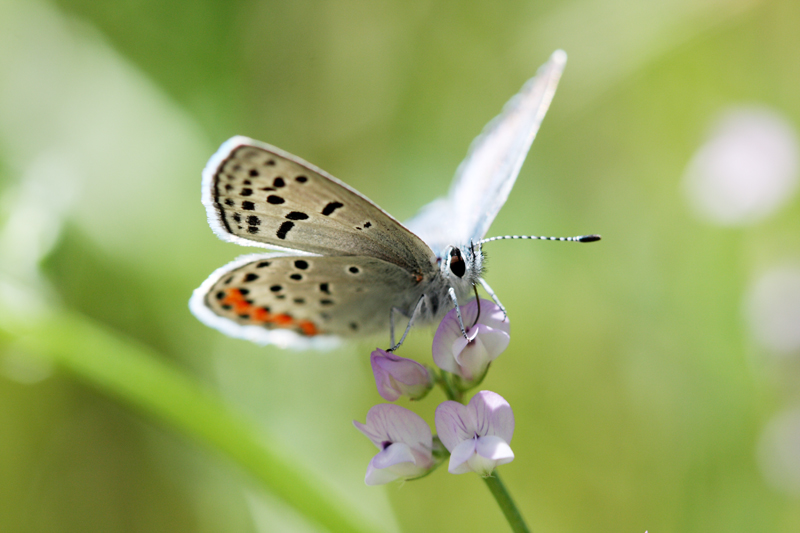
Plebejus acmon
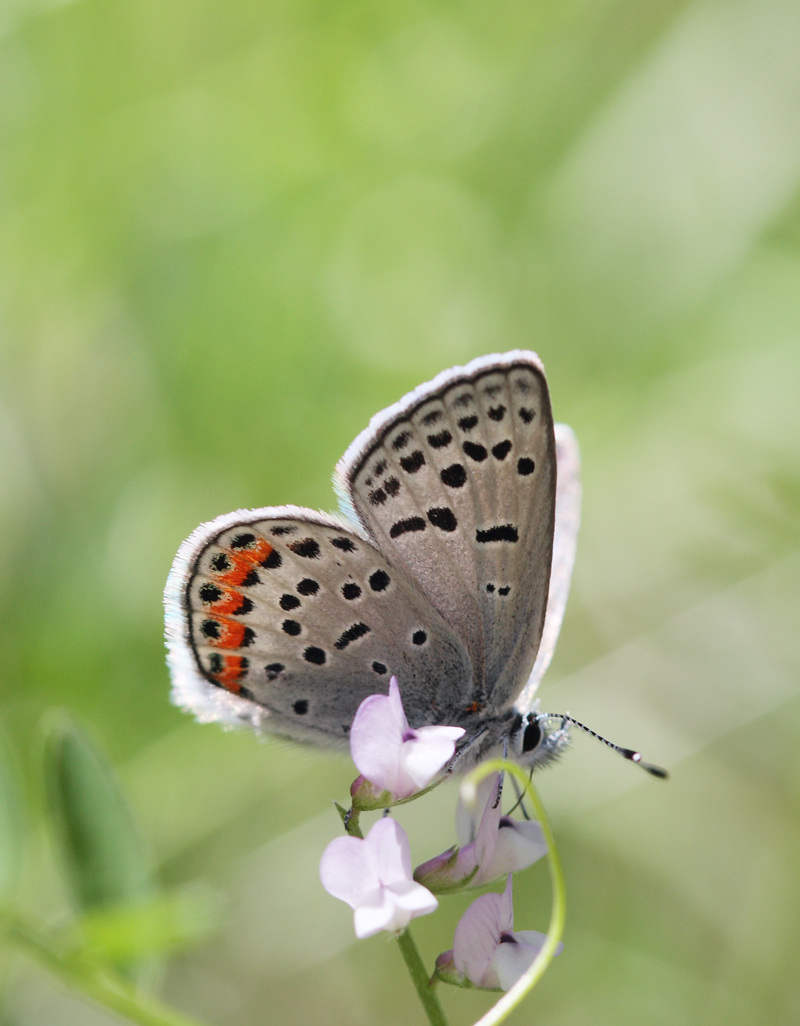
Plebejus acmon

Ethmia arctostaphylella بر Eriodictyon sp.
One interesting note on Ethmia arctostaphylella – the name is a misnomer, it does not actually feed on Arctostaphylos (Manzanita). At the time of description in 1880 Walsingham had found larvae pupating on leaves of manzinata and assumed it was their host plant. In Jerry Powell’s stunning monograph of the group he indicates this moth was reared from Eriodictyon – which happens to be the flower the moth is perched on. The two plants grow side by side, and it’s pretty easy to see how a wandering caterpillar finds its way onto a neighbor.
|
تردید
|













